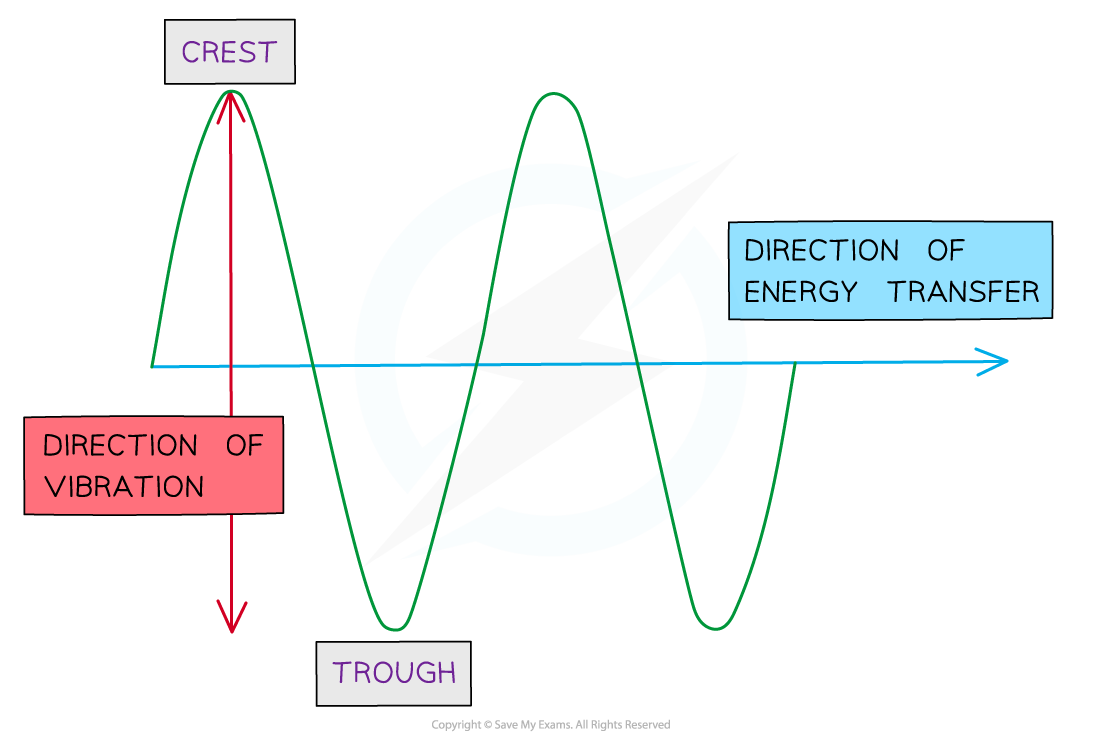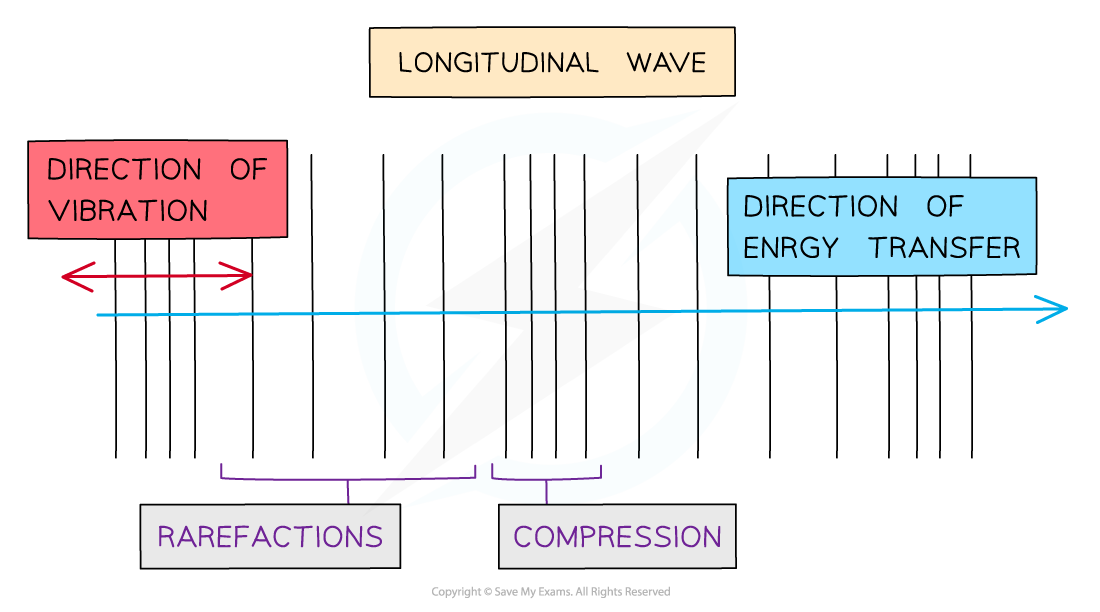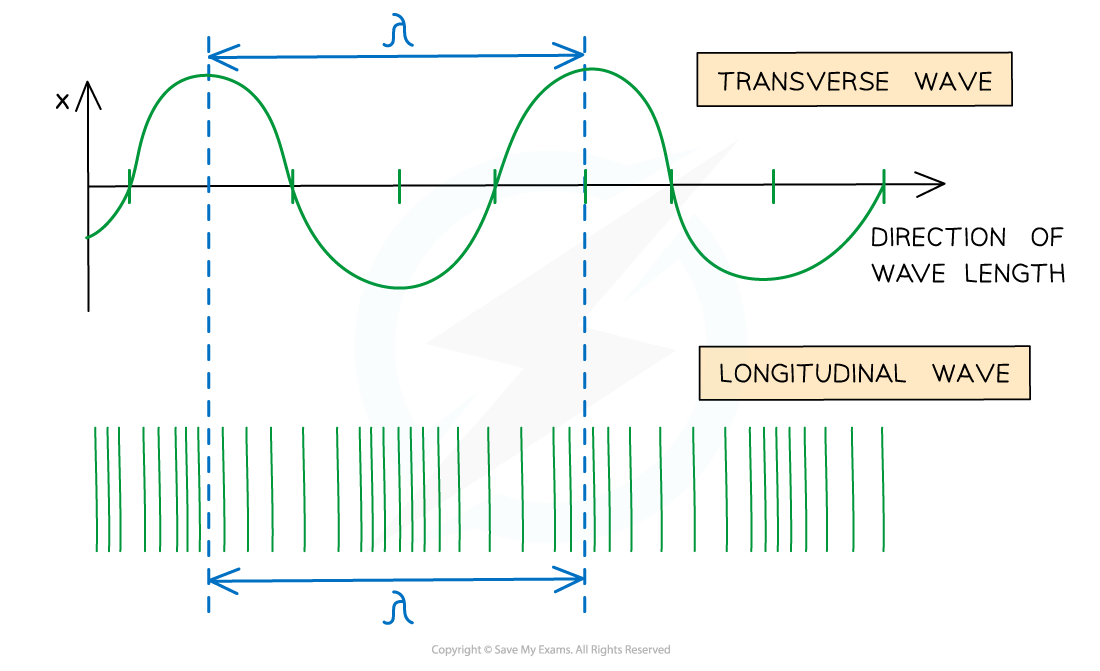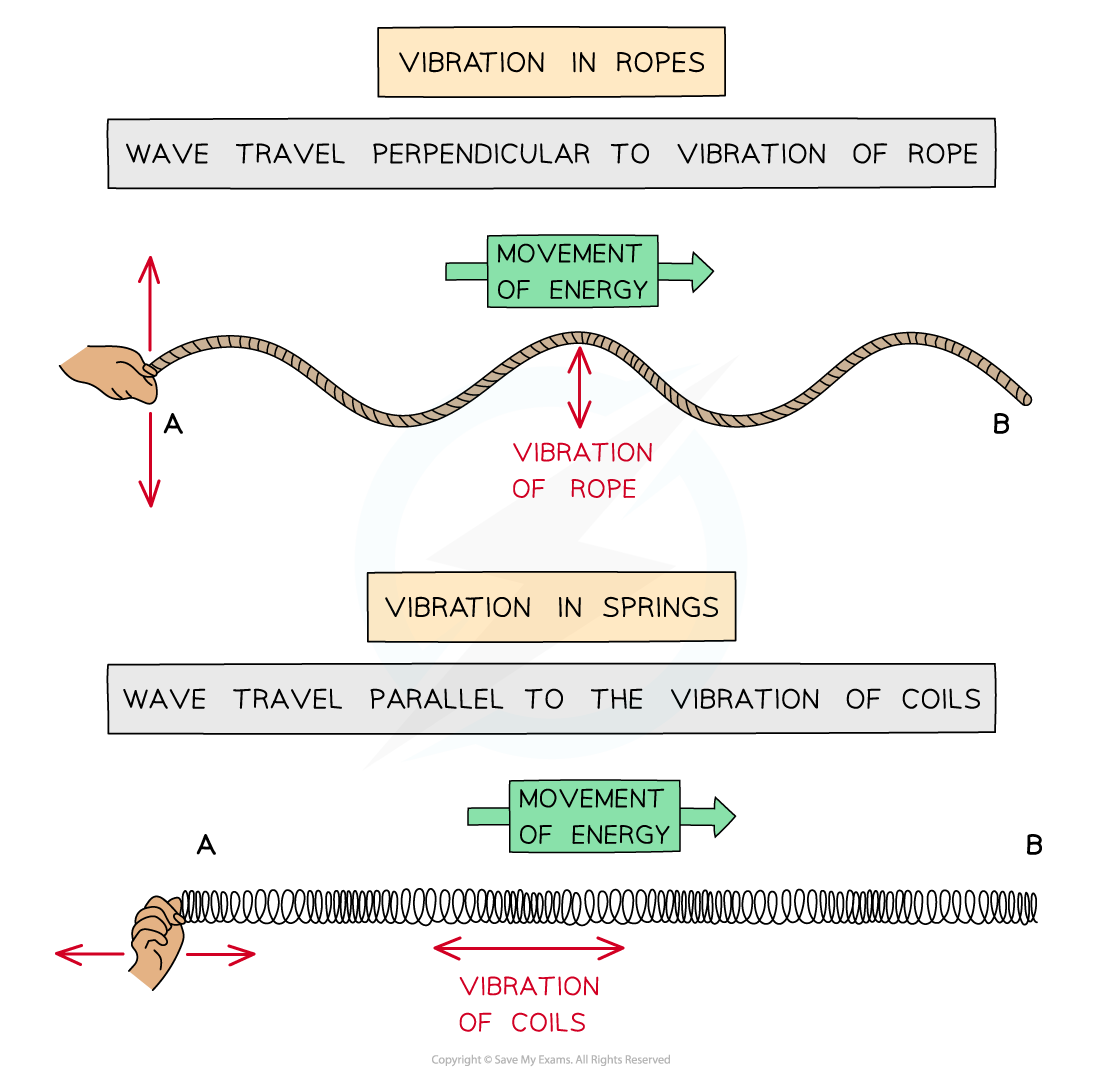- 翰林提供学术活动、国际课程、科研项目一站式留学背景提升服务!
- 400 888 0080
AQA A Level Physics复习笔记3.1.2 Longitudinal & Transverse Waves
Defining Transverse & Longitudinal Waves
- In mechanical waves, particles oscillate about fixed points
- There are two types of wave: transverse and longitudinal
- The type of wave can be determined by the direction of the oscillations in relation to the direction the wave is travelling
Transverse Waves
- A transverse wave is defined as:
A wave in which the particles oscillate perpendicular to the direction of the wave travel (and energy transfer)
- Transverse waves show areas of crests (peaks) and troughs

Diagram of a transverse wave
- Examples of transverse waves are:
- Electromagnetic waves e.g. radio, visible light, UV
- Vibrations on a guitar string
- Transverse waves can be shown on a rope
- Transverse waves can be polarised
Longitudinal Waves
- A longitudinal wave is defined as:
A wave in which the particles oscillate parallel to the direction of the wave travel (and energy transfer)
- Longitudinal waves show areas of compressions and rarefactions
- Compressions are regions of increased pressure
- Rarefactions are regions of decreased pressure

Diagram of a longitudinal wave
- Examples of longitudinal waves are:
- Sound waves
- Ultrasound waves
- Longitudinal waves can be shown on a slinky spring
- Longitudinal waves cannot be polarised
- Energy is transmitted through the wave by:
- The particles in the medium vibrating as they are given energy
- The compressions cause the nearby particles to also vibrate with more energy
- This produces a compression further along in the medium

A wavelength on a longitudinal wave is the distance between two compressions or two rarefactions
Exam Tip
The definition of transverse and longitudinal waves are often asked as exam questions, make sure to remember these definitions by heart!
Examples of Transverse & Longitudinal Waves
- Energy is transferred through moving oscillations or vibrations. These can be seen in vibrations of ropes or springs

Waves can be shown through vibrations in ropes or springs
- The oscillations / vibrations can be perpendicular or parallel to the direction of wave travel:
- Waves which oscillate in a perpendicular direction are transverse waves
- Waves which oscillate in a parallel direction are longitudinal waves
- Examples of transverse waves are:
- Electromagnetic waves e.g. radio, visible light, UV
- Vibrations on a guitar string
- Waves on a string
- Seismic (S) waves
- Examples of longitudinal waves are:
- Sound waves
- Ultrasound waves
- Waves through a slinky coil
- Seismic (P) waves
转载自savemyexam
站内搜索
竞赛真题免费下载(点击下载)
在线登记
最新发布
© 2024. All Rights Reserved. 沪ICP备2023009024号-1





